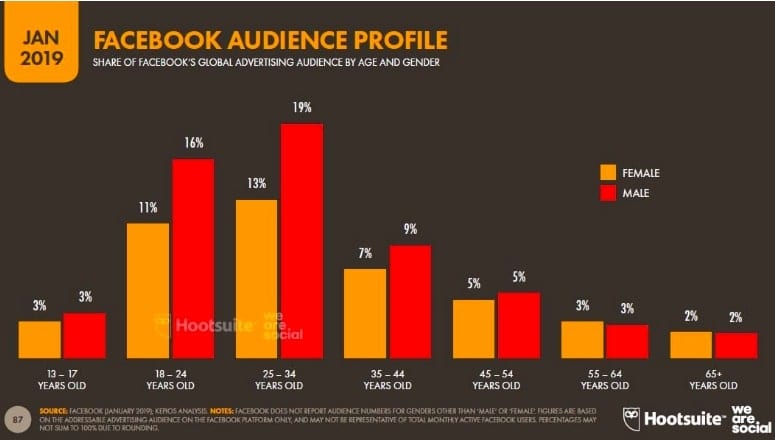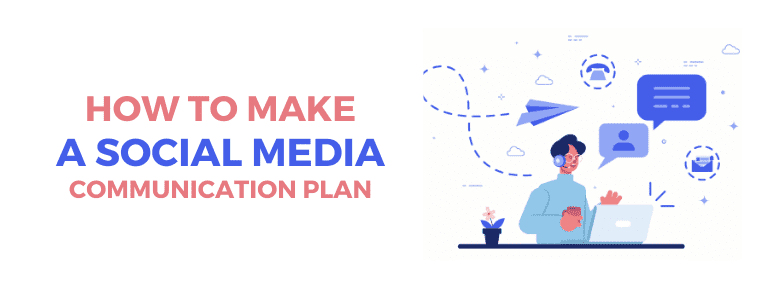Launching an online store it’s a relatively simple task. You pick an ecommerce platform, an attractive product and go for it, but what happens next? Have you thought about how you’re going to direct your target audience to your store?
Only with time and several trials and errors you’ll find the best way to communicate with your customers and, above all, to capture their attention. Emails, paid ads, social networks… these are some of the things you’ll have to specify in your communication plan if you want your store to be a success. In this post we’ll focus on social media marketing, with examples and case studies that will help you design your social media plan.
Table of contents
Each platform has its own characteristics and nuances. However, there are some common considerations that can be applied to all major platforms and should be taken into account to develop your social media strategy.
For starters, here are some of the questions you should ask yourself:
- What kind of content do you want to post?
- How will you interact with your followers?
- How often do you plan to post?
Once you have your answers defined, it will be much easier to work on these recommendations:
- Fill out your profile page. Make sure your description, bio or “about me” is accurate and consistent across all platforms. Whenever possible, include a link to your store.
- Add a profile photo and header. Upload profile and header photos that are consistent with your brand and make sure they fit the dimensions of each platform. Including your logo as well is a very, very good idea.
- Be consistent. No matter how many or which social networks you use, keep your posts and brand voice consistent across all of them. Canva, the social media tool, is a great free tool that will help you design your social media posts. Customers will be able to better identify your company and its values if the posts are consistent across all platforms.
- Find the best posting time. Don’t prepare your posts 5 minutes before they’re shared. Find out what times of day get the most traffic and/or engagement. Prepare your posts and schedule them. It’s okay if you don’t have time to post every day, but make sure that when you do, your content will reach the maximum possible audience.

- Analyze the results. Some platforms have tools that will help you understand the performance of your profile and your publications (Facebook Insights, Twitter Analytics, etc.). Use them to optimize your content and time.
Maybe what you should ask yourself is: where are my customers?
Before you create an account on every social media channel available, research where your target audience is. There’s no point wasting time and resources on a platform if your customers aren’t on it. Here’s an example of audience analysis on Instagram, for instance:

Once you’ve defined which platforms you should implement your communication plan on, follow your competition. Take a look at their list of followers and follows. They’re probably also your potential buyers.
Not sure which social media platforms to use? Ask your customers. Don’t hesitate to send an email or a survey to ask which social network they prefer to connect with you on. If you don’t want to be so direct, ask them how they found you.
As mentioned above, there may be other niche platforms you should focus your efforts on. However, there’s a good chance that your communication plan will target one of these three. So let’s take a closer look at what marketing strategies we can carry out on each of them.
1. Facebook
Facebook has about 2.271 million monthly active users which makes it a very interesting place to target.
Facebook is a key place for people who are looking for your business, so make sure your page looks professional and your posts are interesting.
Tips for your Facebook posts
- Encourage your customers to leave comments and reviews.
- Add a call-to-action button at the top of your page (e.g., “Shop Now”).
- Include videos and images in all your posts.
- Keep your text and text density to a minimum.
- Collect user data and reuse it to correctly target your ads.
2. Instagram
Instagram’s engagement is on average 58 times higher than Facebook. So it’s worth giving this social network a chance.
Tips for your Instagram marketing
- Your feed should be aesthetically consistent and attractive. Plan your posts ahead of time and make sure your images look good next to each other.
- Since you can’t include links in your posts, try to direct your audience to your bio, where you can include a link.
- Until you reach 10,000 followers, you can use this as an opportunity to some of these alternative ways to increase the engagement of your stories.
- Use your feed to promote your products, offers, etc. and make the most of your stories by showcasing your brand in the most natural way. After all, they only last 24 hours, so experimenting is easy!
- Attract a wider audience using hashtags in all your posts.
- Don’t hesitate to share your users’ photos that showcase your product, it will help you generate social proof and higher engagement!

3. Twitter
Twitter moves at a much faster pace than any other platform. Content loses relevance tremendously fast. So the most important thing to remember is that your Tweets will be seen in your followers’ feeds, but only for a limited time.
Marketing strategies for twitter:
- Tweets with images get more engagement than text-only tweets.
- Although 280 characters are allowed, try to reduce the text even more. About 100 is optimal.
- Just like on Instagram, use hashtags to increase the reach of your posts. When people search for that hashtag, your post will appear in the list.
- Don’t hesitate to share content more than once (blog posts, etc.) even if you change the text slightly. The chances of the same person seeing the content twice are pretty slim, especially if the time of publication is different.
Put your communication plan to the test now. The field of marketing is very broad; there is a lot to learn, so what better way to put into practice everything you’ve just read than with these three examples of strategies for your company? Triumph with your social media plan!
1. Have a contest or sweepstakes
Running contests on social media helps spread the word and reach a wider audience. Take advantage of a special date or a new launch to create a contest or sweepstakes around it.
We recommend that you include the following requirements
- Being a follower of your account
- Like the publication
- And tag someone in it.
From there, the rest is up to you. The value of the prize, the duration, the type of contest, etc.

2. Ask for reviews
Consumers are more likely to trust other users than brands. That’s why adding testimonials or reviews to your store and social networks can be very effective. For example, Facebook pages allow customers to leave reviews with a 5-star rating system. Encourage your customers to share their good experiences and post photos of your products on their own social networks.
As you hear it. Leave your shyness aside and go live with your followers. Take the opportunity to ask them what products they’d like to see in your store, what they like most about your brand and what aspects you should improve.
They’ll feel that their feedback is being heard and it will be great for you to meet their needs.
Analyze and experiment
None of these efforts will do any good if you don’t spend some time analyzing the results. Every time you carry out a new activity, observe how your users react to it. Does it increase your engagement? Do you receive more direct messages? Has your website traffic increased?
Even if you create a social media communication plan, marketing strategies can change over time. Above all, be aware that you’ll need to keep testing until you find what works best for you and your niche or sector. So don’t get discouraged; keep experimenting.




Deja un comentario